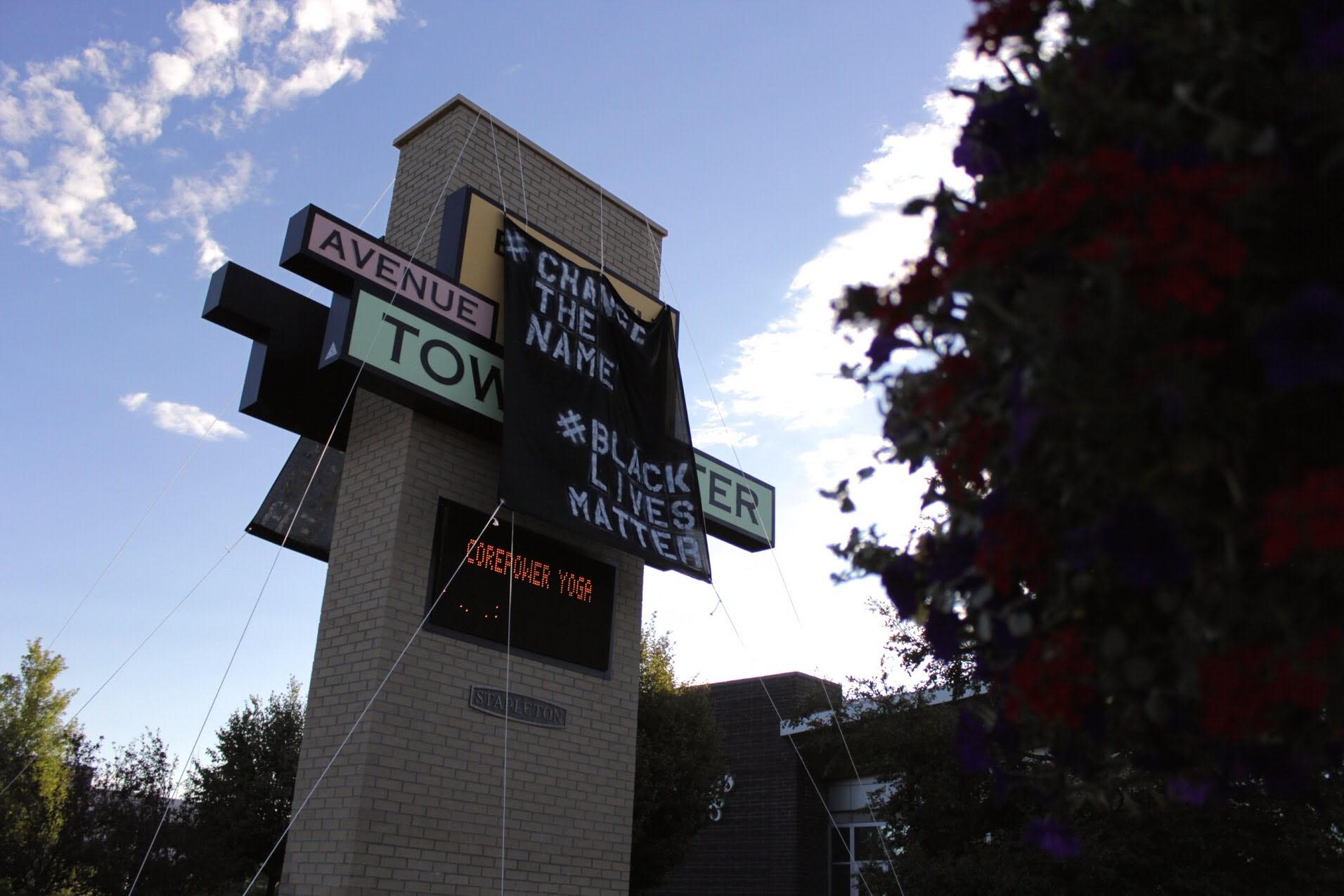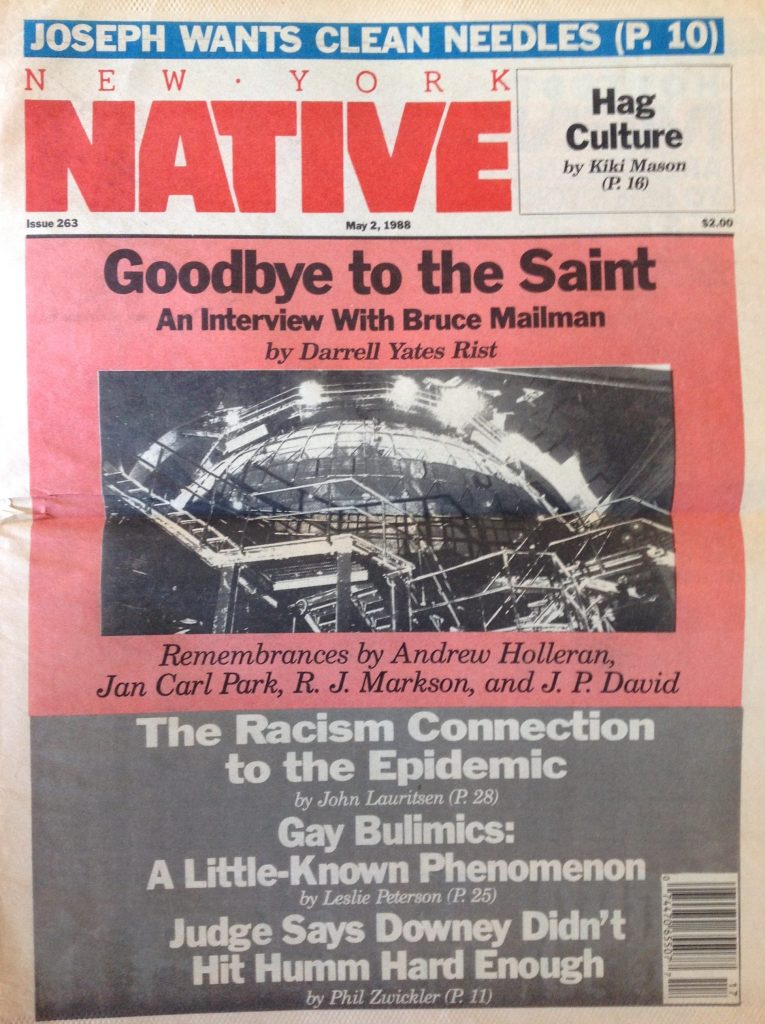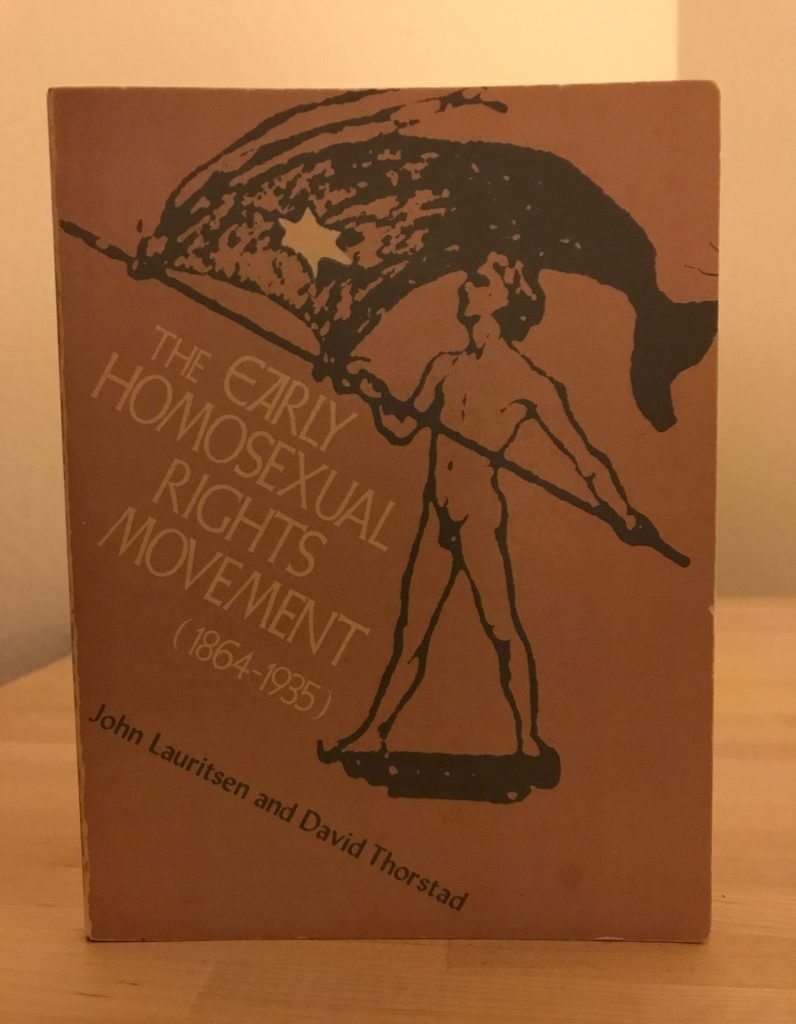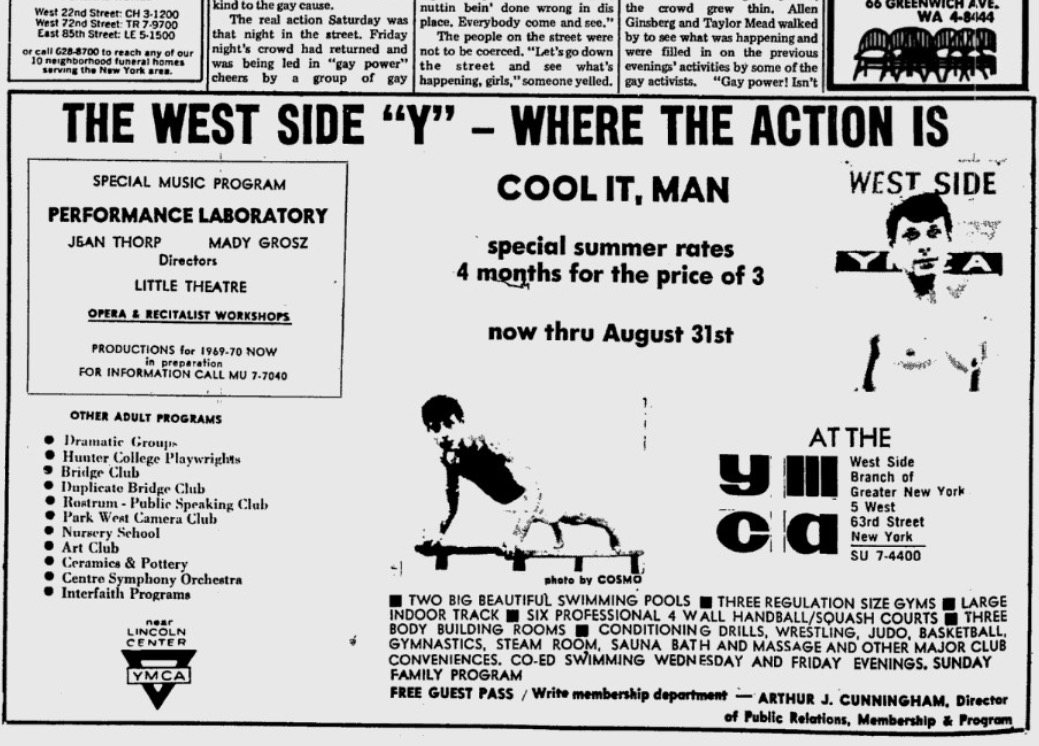It’s been a year since the last edition of Everybody Dance Now. Today we look at some movement-and-music videos as well as several music promos that feature choreography and companies.
Continue reading “Everybody Dance Now 3: Listen to Your Heart”Left the Nest: Jimmie and Penelope Spheeris
Years ago I was surprised when my brother Richard told me that filmmaker Penelope Spheeris was singer-songwriter Jimmie Spheeris’s sister. She: creator of The Decline of Western Civilization, the punk rock doc I saw only last night, tho’ I saw the bands she shot. He: creator of ethereal ballads I found amongst my brother’s LPs when I returned home to Boulder from Los Angeles in the ’70s while he was living abroad.
Continue reading “Left the Nest: Jimmie and Penelope Spheeris”Death be not proud: We’ve Been Here Before
There were varied responses to an earlier pandemic, and I first read the following poem in a 1989 collection, Poets for Life: 76 Poets Respond to AIDS. David Kalstone was James Merrill’s friend whose study of Elizabeth Bishop, Marianne Moore, and Robert Lowell was cut short by his death in 1986. Caro is an Italian endearment.
There were varied responses. What are our varied ways today? How to be in solidarity in a time of distancing?
Continue reading “Death be not proud: We’ve Been Here Before”Symonds, Whitman, Rossetti and Rake
Before Christmas I checked out a book from my little public library branch: Naomi Wolf’s Outrages: Sex, Censorship, and the Criminalization of Love. I had a lot of other things to read and left it for last, not knowing what it contained, vaguely recognizing the author’s name. Turning to it, I recognized Wolf’s photo. If nothing else, readers might remember her defense of Julian Assange when he was accused of sex crimes in Sweden. I thought the book would be a history of censorship, but it’s more comprehensive. By introducing and then returning often to her cast of characters, Wolf creates an intimate narrative against the mise en scène of her historical sweep and sociopolitical stance.
Continue reading “Symonds, Whitman, Rossetti and Rake”“Eat the book”: Electric Evangelists 2
This second and likely last installment of Electric Evangelists (see Part 1) looks at longer works by two composers, both choosing to present religious texts simply spoken atop electronic scores. The third and fourth pieces are artifacts of pop culture, coupling SoCal evangelical eccentricity with European élan. The last composition contains no text at all.
Continue reading ““Eat the book”: Electric Evangelists 2″Falling Awake: Joseph Shuldiner (1957–2019)
Yesterday my friend and collaborator Rob Berg messaged me that my old, dear friend Joseph Shuldiner died. Of a brain tumor. It’s a cruel joke: I’m the one bingeing on cheddar cheese, and last week I was told to go on statins.
My heart goes out to his spouse Bruce Schwartz, his sister Judy, and to all he’s touched.
Joseph and I go a long way back, but hadn’t corresponded for several years. Looking for a photograph last night I came upon a half-dozen file folders containing the following mementos.
Continue reading “Falling Awake: Joseph Shuldiner (1957–2019)”Rosenberg Resistance
The year 2003 marked the fiftieth anniversary of the execution of Julius and Ethel Rosenberg. Their killing had a great impact on my wife Andrea Carney (see Part 1 and Part 2 of our trilogy). Somehow I learned that a major commemoration would be held in New York City on June 19, the same day they were killed. It was produced by the Rosenberg Fund for Children, founded in 1990 by the Rosenbergs’ son Robert, who was grateful for the support he and his brother Michael had been shown during the jailing of, and after the killing of, their parents. The fund’s purpose is “to find and help children today who are enduring the same kind of nightmare he endured as a child.”1
Continue reading “Rosenberg Resistance”Acts of Faith: Electric Evangelists 1
Exactly a year ago my discussion with a comrade about music-compelled-by-struggle led to my first original post here, Attica: Coming Together. Last Friday, talking with this same friend caused me to create a list of musics that employ the spoken word—faith-based speech specifically. After jotting down a few titles I came across an extensive list posted for Easter 2013 by one Mr. Fab, a Los Angeles-based deejay and musician. He helpfully includes the name of each orator, which indicates the popularity of two in particular, R. W. Schambach and Gene Scott. My list nearly ended with Praga Khan’s setting of the former in 1991, but Fab provides twenty more years of titles.
My Friday conversation involved Brian Eno and David Byrne’s album My Life In the Bush of Ghosts for which they used the voice of Kathryn “I Believe In Miracles” Kuhlman. While her estate wouldn’t approve licensing, a 1980 UK bootleg of the intended track and others circulated apparently before the official album was released in early 1981.2 Bush of Ghosts was completed in October of 1980 and Eno and Byrne must have scrambled to replace Kuhlman’s vocal: the substitute was an “unidentified exorcist” recorded the previous month in New York. Both these speakers are acts in their own right, with the exorcist commanding (below), healer Kuhlman exploring (at least initially).
On the bootleg (at 2:32) Kuhlman seems to introduce a guest, perhaps on her television show? Her phrasal pauses are electronically elongated in contrast to the musical pulses, turning prose into something this side of poetry.3
Sit down by my side.
Tell me all about that wonderful experience
when you were the possessorof that wonderful gift
whereby you were enabled to see into the spirit world.
This is what he saw…
This is what who saw? Inexplicably (the track does hiccough as if it’d been trimmed)—and murkily in the mix—Kuhlman turns to scripture: the story of Lot, King James Version (itself a poetical prose).
19 And there came two angels to Sodom at even; and Lot sat in the gate of Sodom: and Lot seeing them rose up to meet them; and he bowed himself with his face toward the ground;
2 And he said, Behold now, my lords, turn in, I pray you, into your servant’s house, and tarry all night, and wash your feet, and ye shall rise up early, and go on your ways. And they said, Nay; but we will abide in the street all night.
3 And he pressed upon them greatly; and they turned in unto him, and entered into his house; and he made them a feast, and did bake unleavened bread, and they did eat.
At which point, of course the men of Sodom demand that the angels be flushed out, “that we might know them.”4 To which Lot generously offers his “two daughters which have not known man.” The tale goes even further downhill from there, but Kuhlman—via the X-acto blade of Eno and Byrne?—omits all of this, returning cheerfully to:
But he’d been given that wonderful gift,
which enabled him to see into the spirit world.
These were angels,
angels with Lot,
and angels are just as real in your life and just as real in my life as they were in the life of Lot.
Only he was given a gift whereby he could see into the spirit world and he saw them.
Surely the men of Sodom also were given the gift, else how would they have known there were new men to be known?
And so Eno and Byrne, having been forced to excise Kuhlman, swapped in an exorcist with a demonic laugh, who declares that his exorcisee’s “husband is the head of her house.” Thus the track moved from house to house, from the spirit world to “The Jezebel Spirit,” its title on the album.5
Anthems and Albums
It’s been noted that Eno and Byrne’s vocals appropriations had an antecedent at least ten years earlier with composer Karlheinz Stockhausen’s Hymnen (Anthems, 1966–1967), which sourced national anthem recordings from several countries around the world. And in 1969 Holgar Czukay (German co-founder of Can) with Rolf Dammers created Canaxis 5 by taking a choral a cappella track from a Folkways album, Music of Viet Nam, and giving it a lush setting.6 On Bush of Ghosts Eno and Byrne would do the same with three tracks from the album Music in the World of Islam (a six-LP box set that I let slip through my fingers when I moved back to Colorado). In 1987 Czukay employed the (mostly sung) vocals of Pope John Paul II, below. “We were blessed by the appearance of His Holyness Popestar Wojtyla and His Swinging Nuns during the Easter ceremonies,” Czukay writes in the credits to the Virgin album Rome Remains Rome.
Touching, Funny, and Disturbing
As can be heard, Eno and Byrne’s careful craft is in contrast with Czukay’s nonchalance. The latter approach also is taken by John Adams in a 1973 composition, a recording of which was released by Eno on his Obscure label. Christian Zeal and Activity is the middle movement of Adams’s triptych American Standard. The ensemble performs a deconstructed “Onward Christian Soldiers” but without benefit of bar lines—and with or without a baton. (Eno would use a similar technique for his Three Variations on the Canon in D Major by Johann Pachelbel.7) Adams’s ensemble is accompanied by the “extra material” of a radio talk show recording, which the composer called “touching,” “funny,” and “disturbing.”8 This description actually could apply to all of the repurposed preachings in Mr. Jay’s list.
(Regarding the image used for the following stream of a 1973 performance…9)
At the time of Adams’s success with his opera Nixon In China (1987), but before that work’s release on record in 1988, Nonesuch issued an Adams sampler, demonstrating that the composer already had a portfolio. For that album, in November of ’86 Edo de Waart conducted (or did he?) members of the San Francisco Symphony in the stand-alone Christian Zeal and Activity, this time with the “extra material” of an uncredited 1976 text-sound piece, Sermon.10
Brother Walter Reigns
Perhaps the most famous stand-alone text-sound creation in history is Steve Reich’s It’s Gonna Rain, featuring the voice of “a young black Pentecostal preacher who called himself Brother Walter.” He was recorded in San Francisco’s Union Square; the piece was “composed” there in January of 1965.11
It’s Gonna Rain was incorporated along with other Reich works (including Come Out, which I discuss in my post from a year ago) into Megamix, released by Nonesuch in 1999.
Megamix was crafted by Michael Kandel, aka Tranquility Bass, whose early collaborations under that moniker with Tom Chasteen employ found vocals, such as the Apollo 11 line in 1991’s “They Came In Peace” (a later “Sea of Tranquility” mix echoes Reich), and the South Asian/Latin stylings of ’93’s “Cantamilla.” As far as proselytizing goes, a relatively soft sell is contained within the duo’s 1993 “Mya Yadana (Kin Kin)” (named after the restaurant the two frequented in Bagan, Burma in 1988 and their server Kin Kin).
Power and Poison
Less restrained are the appeals of R. W. Schambach on the first of John Oswald’s famous mashups, “Power” (1975), which aligns the preacher’s calls with Led Zeppelin’s power chords.12
In the 47-page booklet that accompanies Oswald’s Plunderphonics compilation (pictured above), the artist explains:
This is a track which i made while i was working on the « burrows »
—both he and John Adams were taken by the cut-up method (and results) of William S. Burroughs13—
and at the time i somewhat astigmatically decided that the repeating sample idea was not a direction i wanted to go in, and i put it in the closet. Five or six years later i heard that Bush of Ghosts record, which featured electroquoted preachers over rhythm tracks, and the thought crossed my competitive mind that i had already done this, better.
But Oswald explains further:
The basic premise of « power » was a long-standing one for me which dated back at least to my first hearing of Brother J. C. Crawford’s exhortations on the MC5’s Kick out the Jams. Before i knew much about Jerry Lee Lewis’ background, this seemed like the devil’s music. Rock, was eminently suited to be juxtaposed with ranting evangelistic rhetoric, and its brethren in the political arena, exemplified by guys like Adolf Hitler.
J. C. Crawford‘s resemblance to the latter-day Reverend Billy and his Church of Stop Shopping notwithstanding—
—Oswald denies these juxtapositions are ironic.
Rock fans were uncomfortable listening to talk about god and jesus. God and jesus fans were known to be uncomfortable about rock. So, even early on i was striving for my music to be unpopular.14
As I noted up top, preacher R. W. Schambach was a popular subject of electroquotation, to use Oswald’s term. In 1985 the British group :zoviet*france: included its song “Ram” from ’84 on a multi-artist audiocassette compilation, Ritual: Land’s End, issued by Touch. The track actually overlaps the preceding track, “Greater Faith Cathedral broadcast, rec by S/Z,” which is an otherwise unaccompanied exposé by Schambach of the truth behind the 1978 Jonestown Massacre. “Ram” appeared also in 1985 on the group’s own audiocassette album, Popular Soviet Songs and Youth Music, issued by Singing Ringing/Red Rhino, but it omits Schambach’s speech. A 1992 re-release of “Ram” on the group’s own compilation-from-compilations, Collusion (The Grey Area of Mute Records), resurrects the Schambach, perhaps because of the line that had been made famous the year before by Praga Khan.15 But before we get to those tracks, listen to the beginning of “Norsch Baelmaen,” recorded in 1982 and released in 1983 on the Red Rhino EP Norsch, which features another preacher.
And the backwards version…
“Ram” is the first track on Collusion by :zoviet*france:…
…from which Praga Khan borrows key bits, making his own message, calling for an abandonment of the old modus.
And since we’re on the subject: “Jim Jones” by the L.A. band Party Boys, from the 1984 LP No Aggro issued on Independent Records. No electroquotation here but rather the band’s recitation of Jones’s words.
A somewhat sour note to leave you on, but in Part 2 I look at Ralph Swickard’s Sermons of Saint Francis, Pierre Henry’s take on John the Evangelist, Cabaret Voltaire on Gene Scott, and more.
Notes
Sibling Cities in an Invisible Empire
We’re all familiar with the Charlottesville chant from two years ago: Jews Will Not Replace Us.
It’s a perennial paradox. Torch-bearing worshippers of an almighty God, who answers prayers with miracles, and devotion with salvation, at the same time have an inferiority complex as vast as their numbers. In 2014 the Pew Research Center’s Religious Landscape Study reported that if the U.S. had a population of only 100 (adults) there would be two Jews, one Muslim, and 71 Christians. Verily: Jews will not replace Christians. But what might rightly rile these folks are two other Pew stats: 1) only 47 of those 71 nominal Christians are white and 2) as many young people identify as “unaffiliated” as they do “Protestant.” (Earlier I discussed how sex surveys of young people show that about 1 in 5 don’t ID as straight—about the same percentage as the unaffiliated total in the Pew poll.)
KKKpleton
When my wife Andrea Carney and I first moved to our Denver neighborhood in 2005, Andrea found it was named for a mayor who had profited politically from the prototype of what we saw in Charlottesville. We were heartened in 2015 when Black Lives Matter began an effort to change the name.

In July of this year, we and our neighbors (property owners only, no renters) voted whether to retain the neighborhood name Stapleton, which we inherited from the former airport on which our plots are platted. (Our true legacy, of course, is from indigenous people, as explained here.)
Continue reading “Sibling Cities in an Invisible Empire”The Summer of Our Discontent
The same edition of Gay & Lesbian Review that I touched on last time—its Stonewall Special—contains an essay by author and publisher John Lauritsen: “The Rise and Fall of the GLF.”16 I reread the piece last month.
Shortly after Stonewall in the summer of ’69 Lauritsen attended a meeting of gay people who were debating whether to align with the antiwar movement, with which John had been involved since 1965. He and the other radicals at the meeting carried the day and so the group eventually was dubbed Gay Liberation Front, a nod to the National Liberation Front—aka Viet Cong—of Vietnam. This is an example of the overlap I always saw as perfectly natural. As a kid I organized against the war in high school and and also wrote a book report on James Baldwin’s Another Country.17 Others might have preferred cubbyholes over connections.
nAIDSayer
I first became acquainted with John Lauritsen’s writing through the pages of the New York Native, a gay biweekly founded by Charles Ortleb, publisher of Christopher Street magazine. I’d been picking it up in L.A. and later subscribing because of its stories critical of the medical establishment’s stance on HIV and AIDS. (Only later would I read that the Native published the first article in the popular press about AIDS, in 1981.18) The Native’s Wikipedia entry features an image of the biweekly’s cover of June 1, 1987, quoting Lauritsen’s critique of AZT. Besides Lauritsen I’d been reading other AIDS renegades like scientist Peter Duesberg, who questioned the role of retroviruses in cancer and AIDS and whom John was the first to interview. (Read about John’s many writings on the subject here.)

Gay Liberation’s 150th Anniversary
More recently I’ve consulted Lauritsen’s book The Early Homosexual Rights Movement (1864–1935) coauthored with David Thorstad.19
The authors begin by observing that
the Stonewall riots represent not the beginning of gay liberation but the beginning of a new wave of gay liberation. 1969 marks a rebirth, an anniversary—indeed, one might say the 100th anniversary of gay liberation.20
And the authors describe yet another historical overlap—in their chapter Socialism and the Early Gay Movement. It’s a good introduction to an under-appreciated period in the struggle for liberation(s).

Versus the Voice
On my second reading of Lauritsen’s essay about GLF I took note of what he calls the group’s “first major demonstration.” It was a picket line—not against, say, The New York Times, which forbade the word “gay” until 198721—but against The Village Voice. I was astounded. I’d subscribed to the Voice in the ’80s in order to stay on top of music trends, and I found it to be extremely gay friendly. What a difference a decade makes. And I suspected I might know why GLF had targeted the Voice.
In a footnote to my previous post, Vaniegem and Bubblegum, I mention that one of the two reporters in the Voice’s immediate coverage of Stonewall, Lucian K. Truscott IV, wrote this past February about another, earlier subject: being groped by Cardinal Spellman while trying to interview him for the West Point cadet magazine The Pointer. I kinda forgot about that until rereading Lauritsen, who writes that the GLF picket line was incited in part by the Voice‘s “antigay article about Stonewall.” I wondered if Truscott might have been the author. Fortunately, Google now archives publicly the Voice’s run of 999 editions between 1954 and 2004 (with many holes).
The initial riot reporting is riveting, regardless of subsequent scrutiny. Truscott was joined on the front page of the July 3, 1969 issue by columnist Howard Smith. Truscott—a newly minted West Point grad waiting to report to Fort Benning—was well read enough to compare the first night of Stonewall to a William Burroughs novel. And a “fairy tale.” Apart from the usual mention of limp wrists as well as Truscott’s martial “forces of faggotry” and “gay brigade” the piece is relatively straightforward. As is Smith’s; he actually followed the police into the Stonewall Inn while they waited for reinforcements. Could either of these be the anti-gay story that caused the GLF to picket?
Since I’d corresponded with John Lauritsen in 2012 about an unrelated matter I didn’t hesitate to ask him about this last month. No, the article was penned by Walter Troy Spencer in the July 10 edition of The Village Voice.
Spencer begins that installment of his occasional Last Call column, titled “Too Much My Dear,” with what NBC News in June (2019) called “coincidence” rather than “cause and effect.” And it’s been quoted often, even if Spencer’s source is all but forgotten:
The combination of a full moon and Judy Garland’s funeral was too much for them, Dick Neuweiler said the other day, assessing the cause of the Great Faggot Rebellion.
Spencer strings a strand of tedious complaints lodged over the years anytime people rise up: the inconvenience, the injury to themselves and their businesses, the cops being such great guys (with a sense of humor) and, as Spencer puts it, the “ugliness on both sides.”
Still, why the GLF ire? Reading Spencer today he seems typical of the time. Except that it was The Village Voice. And except that the other motive for GLF’s picket line, explained by Lauritsen in his essay, is that the Voice “refused ads for [a] GLF dance on the grounds that ‘gay’ was a dirty word.” And except that the second page of Truscott’s July 3 article features an ad, reproduced below—innuendo ignored.
Spoiler alert: The GLF demo “was a resounding success,” as Lauritsen writes in his essay. He recounts this and more in deliberate detail in a GayToday.com story from 2004.

Querying the Q-word
John also sent me a personal reflection on Stonewall’s 50th anniversary in which he argues against adoption of the term “queer.” As he states in the GL&R essay, while the GLF men met night after night to define their aims, they concluded that “gay” should be the preferred term for use by themselves and others—despite any unfamiliarity by the general public. “It was not clinical like ‘homosexual,’ timid like ‘homophile,’ or hateful like ‘queer.’”
Fast forward to a world where “queer” has been embraced from the avenues to academia. One might make a comparison with gay appropriation of the Nazis’ pink triangle a generation ago (not to mention Christians’ embrace of the instrument of crucifixion). But a symbol is not a word, even in this emoji-laden era. I 🔻 You?
The triangle had more than a fifteen-year lead in use and so it seems almost relegated to a bygone era. Not necessarily so for queer. While staffing a booth at the Creating Change conference in 2015 (we offered books from AK Press, an oasis in a desert of NGOs and such) a man older than me came up to the table and remarked that queer to him was a pejorative. Impatient with my inarticulate explanation, a woman younger than me interjected: Suppose I’m a lesbian and have a relationship with a trans* man; gay simply isn’t expressive enough.
Read Lauritsen’s “Stonewall 50 Manifesto: Gay Men Are Not Queers!” and see what you think.
Lauritsen is not alone in his criticism of queer, however, reprinting four other authors’ reflections (and two more of his own). He begins with John Rechy, who himself begins by picking apart the male/female use of the suffixes “-or” and “-ess.” This is a slippier slope than gay/queer because it nearly begins and ends with the terms actor and actress. Rechy writes:
In an excess of purported equality, some Hollywood actresses want to be called “actors.” How sad and self-defeating. Doesn’t opting for the male-designated noun, actor, imply superiority of that male form?
We’re so familiar with these two terms that the switch to which Rechy refers is a jolt (if we hadn’t been paying attention). But why it matters to Rechy—and anyone else—says a lot about how we regard thespians and thespiennes in contrast to those engaged in other pursuits. The feminine suffix -ess is applied to female sculptors but generally not to painters; to female masters but few curators; sometimes to female authors (retaining the “o”) but rarely to operators. To female abbots, adulterers, and even tigers, but rarely to female scholars and tutors and barbers. As a child I recall a neighbor discussing her experience with a negress—but never since. This week, while seeing a dermatologist, I abandoned any impulse to address her as Doctress.
And since I’m nitpicking…. Another of Lauritsen’s reprints, by Arthur Evans, invokes
Ganymede, the beloved of Zeus. In ancient Greek, the word “Ganymede” (Ganumedes) means both cheerful and homosexual, just like our word “gay”. Both words come from a common Indo-European root (ga-).
I realize this supports Evans’s contention that gay and its meanings precede the nineteenth century, but Zeus’s “beloved” often is portrayed as having been abducted. And I realize also: that was then and this is now. But to cite Ganymede in the course of discussing the “insult” of queer is noteworthy because this mythology touches the taboo of pedophilia and, well, kidnapping, trafficking, and servitude if not slavery, even as Ganymede was compensated as celestial cupbearer and made immortal—whether he liked it or not.22
What’s in a name?
Rechy, Evans, Lauritsen, and the two other writers he presents—Wayne R. Dynes and Stephen O. Murray—all remark on the q-word’s mean meanings.
1queer adj [origin unknown] 1 a : differing in some way from what is usual or normal b (1) : ECCENTRIC, UNCONVENTIONAL (2) : mildly insane : TOUCHED c : absorbed or interested to an extreme or unreasonable degree : OBSESSED d : sexually deviate: HOMOSEXUAL 2 a : WORTHLESS, COUNTERFEIT〈~ money〉b : QUESTIONABLE, SUSPICIOUS 3 : not quite well
2queer vt 1 : to spoil the effect or success of〈~ one’s plans〉2 : to put or get into an embarrassing or disadvantageous situation
3queer n : one that is queer; esp : HOMOSEXUAL23
The writers point out that embrace-of-queer disregards the sting of queer-as-invective for older people. Dynes argues: “In the seasoned veteran’s view the newcomer seeks to reinvent the wheel.” Murray’s belief is “that those who despise differences will always be very happy to accord that label to anyone who wants it.” Of course, this is the conundrum of sexual liberation: to be given permission to be different, to revel in difference, to be tolerated in difference, to revolutionize in difference, to homogenize difference….
The arguments collected by Lauritsen are laid out well and the reader can decide on the vigor of their various vintages—Dynes 1995, Murray 1997, Lauritsen 1998 (and 2019), Rechy 2005, Evans 2009. And yet I wondered as I read them why I was unmoved. Coming into a sexual sensibility in the 1960s, I am old enough also to have a sense of queer. Still I can’t recall it ever being used. Fag on the other hand seemed to be the insult of choice. And like Rechy, I can’t imagine an academic discipline coalescing under the designation of “fag theory.” Reimagining gay, just as queer has been, is worth considering, if it’s not too late.
Header image: spread from
The Gay Liberation Book (1973),
ex-University of Vermont Library










